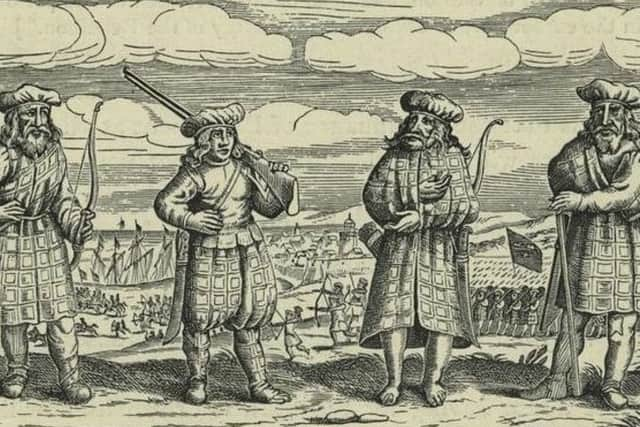Who were the '˜redshanks' of the Highland clans?
Usually drawn from the Hebridean clans, the redshanks were a mercenary force who played a key role in fighting the English in Ireland during the 16th Century.
At the time, the English espionage network estimated that well over 6,600 men were ready for war in the Western Isles of Scotland, according to historian Allan Macinnes in his book Clanship, Commerce and the House of Stuarts.


Advertisement
Hide AdClans on the west coast of the mainland also offered up men for paid fighting.
The redshanks, known as the buannachan in the Scottish Gaeldom, usually hired themselves out to Irish lords during the summer months with the fighting contracts a way for the Highland clans to raise cash.
Poverty and overpopulation in the Highlands made the professional soldiering, usually in Connacht and Ulster, an attractive proposition with the fighting prowess of the men, normally schooled in seamanship and military tactics from a young age, highly regarded.


Clans who assembled the redshanks included the McQuarries, the Macleods and the Macleans with the southern branch of Clan Donald contracting out men from Jura, Islay and Kintyre
Meanwhile, the Campbells recruited from their base in mid Argyll and allied clans in Lennox, Arran, Bute and Mull.
The supply of redshanks to northwest Ulster took off following the marriage of Lady Agnes Campbell, daughter of Colin Campbell, the 3rd Earl of Argyll, of Inverary Castle, to Irish chieftain Turlough Luineach O’Neill in 1569.
Advertisement
Hide AdThe marriage came with a dowry of 1,200 Highland soldiers with Lady Agnes, who died in 1601, becoming a key figure in the Irish resistance to English rule.
Marriage between Irish leaders in Ulster and Scottish wives became more common to secure a steady stream of mercenaries, according to accounts.
Advertisement
Hide AdThe redshanks were give money and food for their service with the men usually away from home for a year at a time.
Reserves of men were kept at home in Scotland to ensure land could still be tended.
Those who went to Ireland were accompanied by leagues of advisers, which Macinnes described as a “distinct parasitic class” who profited from the mercenaries and survived on food and shelter offered by tenants and labourers.
The English government started to take steps to curb the flow of mercenaries from Scotland in the late 1590s.
The Earls of Argyll were discouraged from recruitment of the fighting forces with subsidies paid to key figures in the Western Isles to keep men and home, according to accounts.
Naval forces were also sent into the North Channel of the Irish Sea to prevent the mass movement of fighters.
Advertisement
Hide AdJames VI, seeking succession to the English throne, also took action against the rebels in Ireland with a series for expeditions made to pacify the islands.
The end of the redshank contracts was sealed with the routing of Irish rebel leader Hugh O’Neil, Earl of Tyrone, at Kinsale in December 1601 by English forces, with the demand for large troops of Highland fighters starting to wane.
